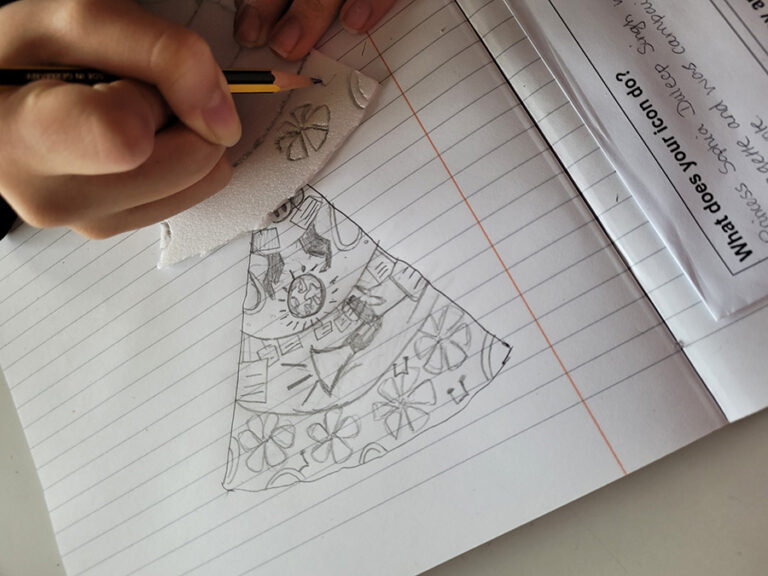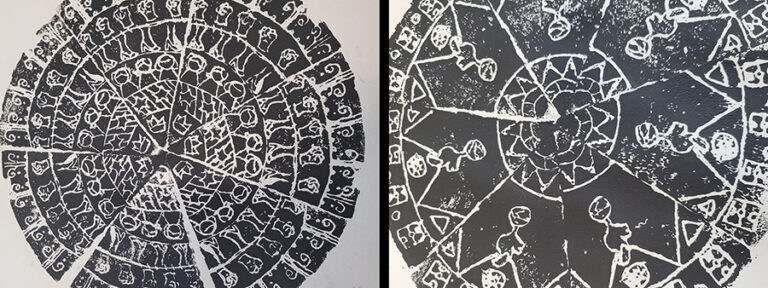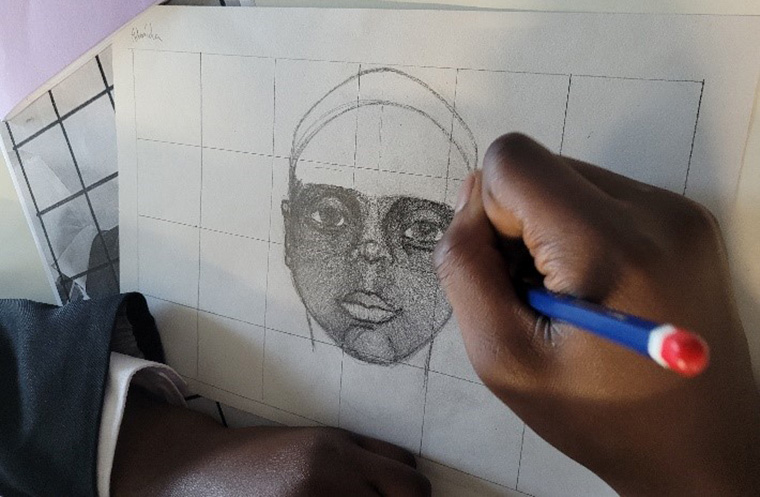From October 2021 to February 2022, The National Archives Education Service launched its first National Art Competition. It was called ‘Capturing our Collections’ and was supported by NSEAD, the National Society for Education in Art and Design. Following the competition, we created this online gallery showing some of the artworks.
We wanted to encourage the entrants to think about the importance of using historical documents in exploring the stories of people or social and political themes in history. So we challenged them to create their own artworks inspired by documents from our collection – such as letters, posters, photographs, newspapers, census records, maps, reports, wax seals, or written testimonies.
Lynn Pomfret, a secondary school teacher and subject lead for Art and Design, was one of our three competition judges. Here, Lynn describes how her students used original documents to create their work as part of Black History Month.
Lynn writes:
I have known the work of The National Archives for many years but could never think of ways to incorporate it into my Art teaching. That was until I was invited by Clare Horrie to judge The National Archives Art Competition earlier this year. It was so inspiring seeing the fantastic artworks created by students who had used documents from the archive as starting points.
I teach at St Paul’s Academy in Abbeywood, London. The department has two Art teachers – me and Patrick Michalopoulos. Our school is located in an area of high deprivation and welcomes pupils from many different backgrounds. When planning the Art and Design curriculum, it has always been important for the department to introduce students to a wide range of artists and craftspeople who reflect the many different ethnicities and cultures found within the school. For this year’s Black History Month we wanted to explore the idea of unsung heroes – people the students might not necessarily have heard of, people who would have shaped the communities they lived and worked in, and who would have had to overcome unbelievable prejudice to do so.

I began planning a portraiture scheme of work for Year 9 for Black History Month using the excellent Black, Asian and Minority Ethnic Histories resources on The National Archives’ website.
From this I put together a presentation featuring 10 historical figures, from Walter Tull to Sislin Fay Allen. I wanted to collect people who had interests that the students might share. This presentation was then given to the students as a homework task. Now, they had to research a person using the National Archives’ links and then present their findings back to class.
Many of the students had never heard of The National Archives and the extensive work it does, so this was a great way for them to explore the other education resources available. Next, I introduced the students to some artists who take a less conventional approach to showing their artwork – from Jean-Michel Basquiat and Shepard Fairey, to street artists such as Indie 184 and Chris Daze Ellis.
Like the histories of many of the individuals we were researching, I wanted the students’ final portraits to have layers. The students made their own A4 sketchbooks to work in and decorated these by creating stencils and painted and printed layers to act as backgrounds to their portraits. Then looking at the work of Shepard Fairey, we created tonal portraits with layered backgrounds.

The students then used their research to create mandalas for their chosen historical figure, creating designs which contained symbols relating to their chosen person. They transcribed these on to polystyrene sheets and then printed them, with some fantastic results.

Here (on the left), for example, is a print created by Kianna, whose inspiration was Princess Ademola. Leroy was researching Walter Tull and created this piece (on the right). You can clearly see the Tottenham Hotspur logo and football pitches in his print. Students have also been practicing creating their own portraits using the grid method to transcribe an image. They will use this technique when they create their final portrait.


The project has been great for the students. I will expand it to Key Stage 3 and use more resources and documents from The National Archives as inspiration for Key Stage 4. The students are really enjoying using materials from The National Archives to research their chosen figure in depth. And it has helped me to access a wealth of starting points for projects across many different areas. I hope to share the final results with you after half-term!